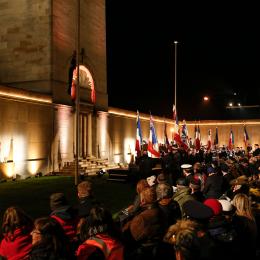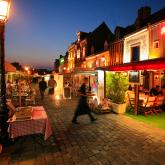Accounts from the past, remembered today
So that the memories of these “travelling soldiers” live on forever, or when small moments from history show us a view of the bigger picture

Traces of The Great War are visible all around our département, especially in the east: in villages wiped out then rebuilt in an Art Déco style (such as Albert), or in remnants found in fields or during construction works.
The duty of remembrance is as strong as ever, living on even in younger generations, as the 240,000 something brits who visit the circuit du souvenir (route of remembrance) every year are testament to.
 Soldats de la Première Guerre MondialeKaïopai
Soldats de la Première Guerre MondialeKaïopaiThe Centre of Interpretation at Vignacourt 14-18:
During the Great War, Vignacourt was an important logistical base for the British Army, as well as a place for its soldiers to rest and recover. Louis and Antoinette Thuillier, photography enthusiasts, immortalised soldiers from all over the world, taking pictures of them at their farm. Four thousand photographic plates were found at the site in 2010. This exceptional collection of inestimable value is now available to see in the now restored farmhouse.
 Graffitis de soldats à la cité souterraine de NaoursOTAM - ADF
Graffitis de soldats à la cité souterraine de NaoursOTAM - ADFThe Museum of Traveling Soldiers, opened in Naours, reveals a less bloody face than usual and one little known - that of the soldiers’ recreation behind the lines. The more than 3000 items of graffiti in wooden pencil identified to date on the walls of the underground city, already a tourist site at the time, are of incredible freshness and make it the largest concentration of WW1 inscriptions known to date. A scientific study is currently being carried out to retrace the life trajectories of all of these visiting soldiers.
 Graffitis de soldats© L. Rousselin
Graffitis de soldats© L. RousselinThese emotionally powerful traces can also be found on the thick walls of the Belfry of Amiens. The basement there has dungeons (the belfry served, among other functions, as a prison) where the graffiti of Australian soldiers remains.
 Statue de l'ange pleureur de la cathédrale Notre-Dame d'AmiensOTAM - MB
Statue de l'ange pleureur de la cathédrale Notre-Dame d'AmiensOTAM - MBAt Amiens, a place where soldiers always came to rest, recover and be entertained, is the Cathedral’s “Weeping Angel” which, thanks to photos and postcards sent to families, is known worldwide. Protected and reinforced inside and outside by 22,000 sandbags, the removable works of Notre Dame were taken far behind the front, and Paris Firemen came to remove the stained-glass windows but the Cathedral was still hit by three bombs during an air raid in April 1918. A buttress was destroyed, and the vault of the south aisle of the choir was damaged, as well as the paving. Marks on the latter bear witness to the event.
 OT AMIENS
OT AMIENSEmerging intact from the First World War, Notre Dame d'Amiens is recognised as a major site for remembrance. On the pillars of the south arm of the transept there are sealed commemorative plaques paying tribute to Marshal Foch, and General Leclerc de Hautecloque, a native of the country, as well as to the soldiers from all over the world who took part in the fighting. Finally, the Chapel of the Sacred Heart contains the six flags of the Allied Armies which defended Amiens in 1918.



























